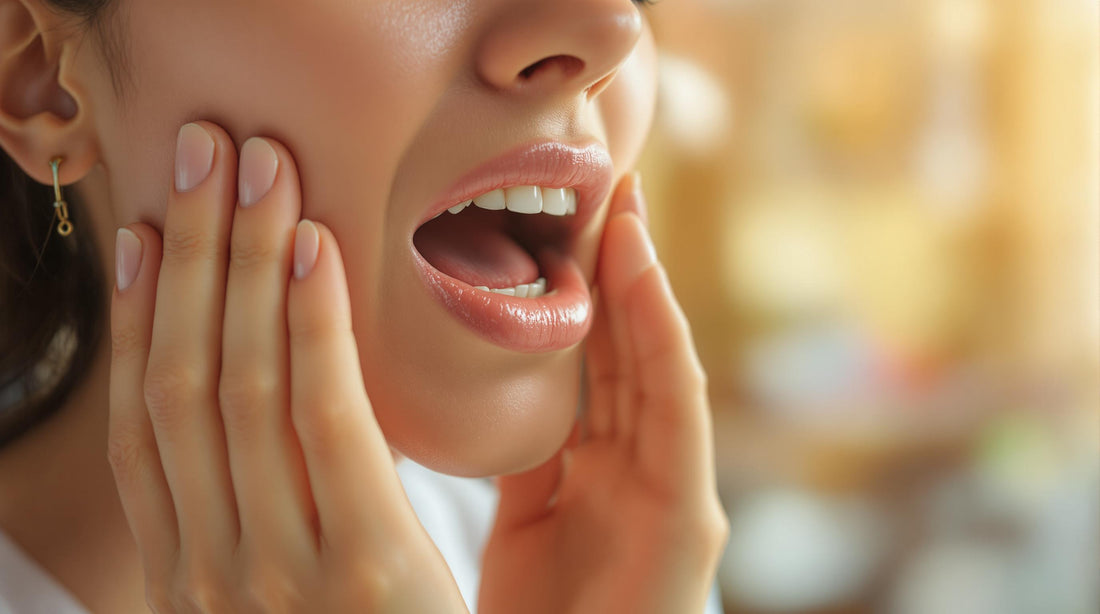Breathing through your mouth instead of your nose might seem harmless, but it can lead to serious oral health problems. Here's what you need to know:
- Dry Mouth: Mouth breathing reduces saliva, which protects your teeth and gums.
- Tooth Decay: Less saliva means more bacteria and acids, increasing cavities.
- Gum Disease: Dryness encourages plaque buildup, leading to gum issues.
- Bad Breath: Odor-causing bacteria thrive in a dry mouth.
- Facial Changes: Long-term mouth breathing can alter facial and dental structure.
Quick Fix: Try Mouth Taping
Using mouth tape at night promotes nasal breathing, keeps your mouth moist, and reduces these risks. Products like Lulltape are designed to help, along with a good oral care routine. If mouth breathing persists, consult a doctor to address underlying issues.
For better oral health, focus on nasal breathing, maintain proper hygiene, and consider tools like mouth tape to protect your teeth and gums.
The Truth about Mouth Taping: A Sleep Surgeon Review
5 Major Oral Health Issues from Mouth Breathing
Mouth breathing can lead to several oral health problems. Below are five of the most common issues linked to this habit:
Dry Mouth
When you breathe through your mouth, you bypass the nasal passages that naturally humidify the air. This often leads to chronic dry mouth, which reduces saliva production. Without enough saliva, your mouth loses its ability to neutralize acids and wash away bacteria, creating an ideal environment for cavities and bad breath to develop.
Tooth Decay
With less saliva to protect your teeth, acids and bacteria linger on tooth surfaces longer. This increases the likelihood of cavities, speeds up decay, and weakens enamel over time.
Gum Disease
A dry mouth also encourages plaque buildup along the gum line. This can lead to conditions like gingivitis and, if left untreated, more severe periodontal disease.
Persistent Bad Breath
A lack of saliva allows odor-causing bacteria to thrive, resulting in bad breath that regular brushing and flossing may not eliminate.
Changes in Facial and Dental Structure
Over time, mouth breathing can affect tongue posture and muscle activity. This can interfere with facial development and alter the shape of dental arches. Promoting nasal breathing early can help maintain proper muscle function and support healthy oral growth.
sbb-itb-31084ec
Using Mouth Tape to Stop Mouth Breathing
Mouth taping offers a straightforward, science-supported way to address the oral health risks linked to mouth breathing. It helps prevent mouth breathing, encourages nasal breathing during sleep, and supports better oral health.
Why Nasal Breathing Matters
Breathing through your nose helps filter, warm, and humidify the air you inhale. This process helps maintain saliva levels and keeps your mouth moist throughout the night. Here's how mouth taping specifically addresses common oral health concerns.
Tackling Oral Health Problems
Using mouth tape at night can directly help with these issues:
| Oral Health Problem | How Mouth Taping Helps |
|---|---|
| Dry Mouth | Maintains saliva flow during sleep |
| Bacterial Growth | Keeps the mouth moist, limiting harmful bacteria |
| Bad Breath | Prevents dryness, keeping breath fresh |
| Tooth Decay | Lowers cavity risk by reducing dry mouth |
Lulltape, designed with a non-restrictive and hypoallergenic material, allows natural mouth movement while promoting nasal breathing.
Boosting Sleep Quality
Mouth taping not only supports oral health but also improves sleep. It helps reduce snoring, keeps your mouth moist, and encourages deeper, more restful sleep.
Steps to Control Mouth Breathing
Managing mouth breathing involves a mix of professional advice, consistent nighttime habits, and helpful tools. Here's how you can address it effectively:
When to See a Doctor
Consult a doctor if mouth breathing persists, especially if it's paired with symptoms like snoring, poor sleep, or constant daytime fatigue. Identifying the cause early can help address potential health issues and uncover any related conditions.
Nightly Oral Care Routine
A good nighttime routine can encourage nasal breathing while you sleep. This can play a key role in reducing mouth breathing.
How to Use Mouth Tape Correctly
If you're using mouth tape, follow these steps to ensure it's safe and comfortable:
- Prep your lips: Clean and dry them thoroughly, removing any oils or lip balm.
- Apply the tape: Place the H-shaped lulltape strip gently across your lips.
- Remove carefully: Take it off slowly in the morning, and take note of any changes in your sleep quality.
Conclusion: Addressing Mouth Breathing
Mouth breathing can dry out saliva, promote harmful bacteria, and lead to issues like tooth decay, gum disease, and bad breath. Studies indicate that nasal breathing can increase oxygen intake by up to 20%, while also filtering and humidifying air, contributing to better oral and overall health.
Using mouth tape at night is a simple way to encourage nasal breathing and keep your mouth moist. Products like Lulltape (rated 4.7/5 stars by over 2,000 users[2]) offer hypoallergenic, gentle strips that can help reduce snoring, improve sleep quality, and leave you with fresher breath in the morning.
Pair nightly mouth taping with a solid oral care routine and guidance from dental professionals to combat mouth breathing, protect your oral health, and wake up feeling refreshed. Check out our nightly routine section for more details.



